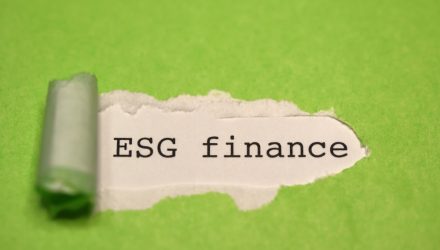When considering of ESG investments, exchange traded fund investors should look through the various styles a particular focus on how impact investing can yield great outcomes.
In the recent webcast, Going Beyond ESG: Impact Investing for 2021, Keith Dixson, Head of International Business Development, Candriam; and Chris Hempstead, Director of Institutional Business Development, IndexIQ, outlined what ESG investments are all about. The Environmental factor includes issues relating to the quality and functioning of the natural environment, such as greenhouse gas emissions, climate change, renewable energy, energy efficiency, and waste management The Social factor covers issues relating to the rights, well-being and interests of people and communities, including areas such as human rights, labor standards, workplace health and safety, employee relations, diversity, consumer protection, and controversial weapons. Lastly, the Governance factor covers issues relating to the governance of companies and their stakeholders, including topics such as board structure, size, diversity, skills, and independence.
ESG investing has grown considerably in attention and assets under management, with more than $30 trillion of assets around the globe in ESG investment as of 2018 and $12 trillion of that was in the United States.
Dixson explained that there are various types of ESG or sustainable investing styles. For starters, an ESG integration style considers or integrates ESG factors into their investment approach alongside other material factors used to assess the risk/reward profile of securities. Exclusionary investing excludes controversial companies or sectors that do not meet certain sustainability criteria. Inclusionary investing seeks positive ESG outcomes by selecting companies based upon their ESG profiles in their sector. Lastly, Impact Investing attempts to deliver measurable social and/or environmental impact as one of the objectives, in addition to delivering financial returns.
Dixon argued that compared with other sustainable investing approaches, “impact investing is the most proactive in that investors explicitly use capital to attempt to influence the world in a positive way. That said, impact investments are still investments. Unlike purely philanthropic approaches, impact investments seek a financial return, though that objective can range from above-market rate to below-market rate returns, depending on the investor’s goals.”
Impact investments aim to address sustainable development goals established by the United Nations in 2015, including things like no poverty, zero hunger, gender equality, clean water and sanitation, affordable and clean energy, responsible consumption and production, and climate change, among others.
A key aspect of impact investing is clearly measuring both the financial and impact dimensions of these investments. According to a 2017 survey, 66% of impact investors sought risk-adjusted market-rate returns, 19% sought returns close to or just below market-rate returns, and 15% sought below market-rate returns or to preserve their capital. Survey results also suggest that their goals are being achieved. According to the Global Impact Investing Network, 98% of survey respondents stated that their investments had met/exceeded their impact goals, while 91% stated that their investments met/exceeded their financial return expectations.
Looking ahead, Dixson believed that impact investing still has more room to run. Impact investments represented less than 2% of the overall $30 trillion of global assets managed following a sustainable process. This area could come under the limelight as trillions of dollars are still needed to meet the UN’s sustainable development goals over the next decade
“ETFs are playing an increasingly important role in helping investors gain access to sustainable investments,” Dixson said.
ESG ETFs provide a simple and low-cost solution, while also delivering on performance objectives. ESG ETFs saw global net inflows of over $38 billion in the first seven months of 2020, with 108 funds being added to the individual product list. These net new global flows into ESG ETFs broke through the $100 billion milestone as of of the end of July 2020.
In a recent New York Life Investment Study, 53% of the general population surveyed indicated that they are defined as a “Values-Driven” investor whose portfolio is highly diversified and has taken action against a brand, divested their portfolio of a company that no longer aligned with their beliefs, or changed the types of products purchased. Additionally, approximately 50% of “values-driven” consumers are open to ESG investing and are likely to discuss ESG solutions with their advisor. The level of social responsibility among “values-driven” consumers is high, which is reflected in their investment attitudes, with 62% saying they will sacrifice some level of return to ensure investments reflect personal social views.
As a way to help investors capture this opportunity, IndexIQ, a New York Life Investments company and a leading provider of innovative investment solutions, has come out with a line of environmental, social and governance, or ESG, related ETFs, including the IQ Candriam ESG US Equity ETF (IQSU) and the IQ Candriam ESG International Equity ETF (IQSI), which incorporate CANDRIAM’s industry-leading ESG research and data for the first time in a cost-effective ETF wrapper.
Financial advisors who are interested in learning more about ESG investments can watch the webcast here on demand.
Meanwhile, the Candriam Academy aims to raise the awareness, education and knowledge of financial intermediaries on the topic of sustainable investing via an innovative online platform of inspiring and actionable content and materials. The Academy is free of charge and open to all (though has been conceived with the needs of intermediaries in mind).
For more information, visit https://riachannel.com/candriam.

